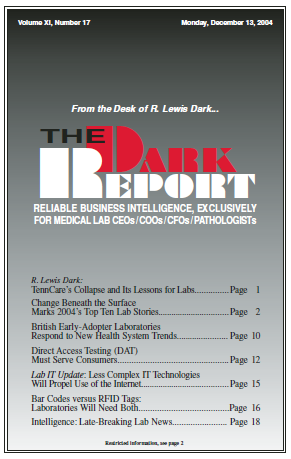CEO SUMMARY: Take everything you liked about bar code tracking. Eliminate the problems of reading bar codes. What results is the promise of radio frequency identification devices, or RFIDs. In the United States, it is already finding uses in blood transfusion, patient identification, and specimen tracking. Moreover, experts predict RFID costs will decline rapidly, further …
Bar Codes vs. RFID Tags: Labs Will Need Both Read More »
To access this post, you must purchase The Dark Report.


